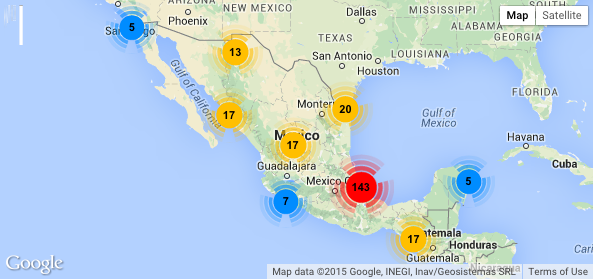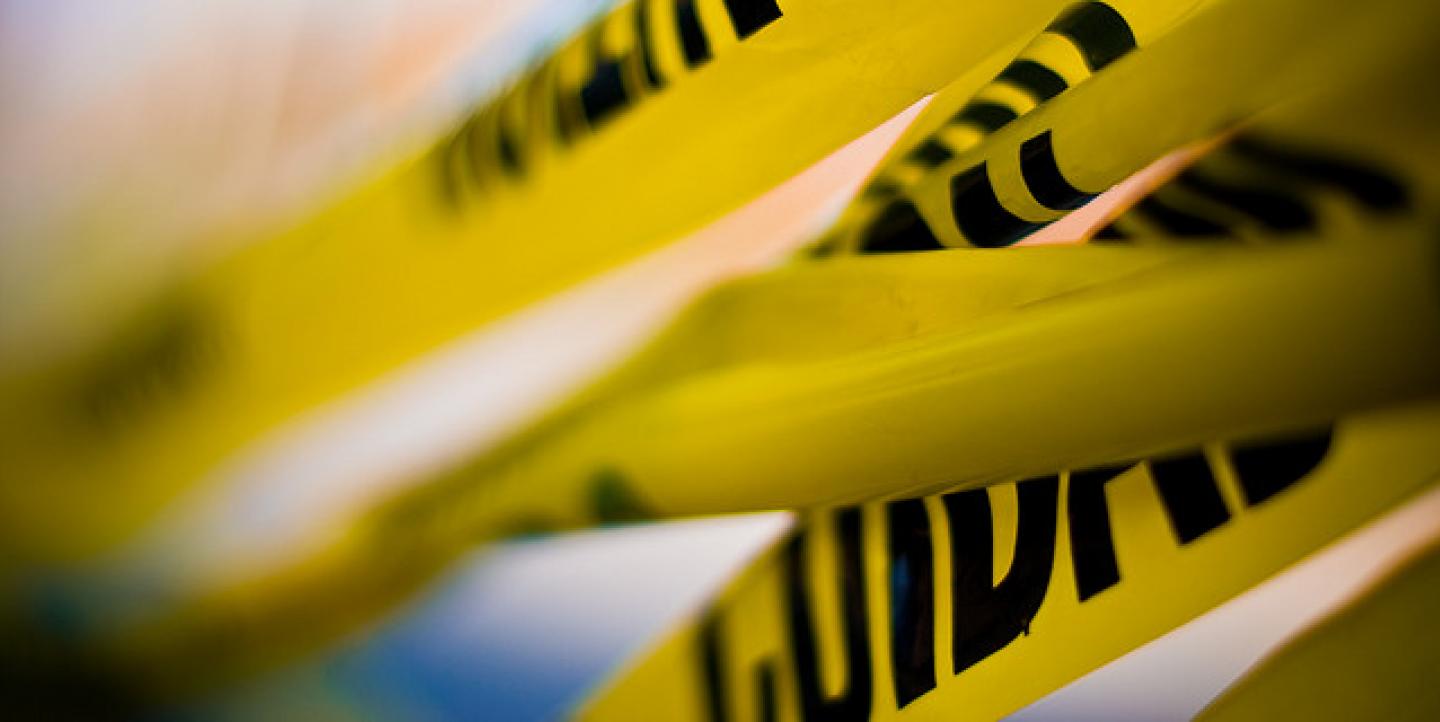The name of Moisés Sánchez has been all over the news in Mexico the past few weeks, after his kidnapping in the state of Veracruz. He is the first journalist kidnapped and killed in the country in 2015.
Thanks to the map Journalists at Risk (Periodistas en Riesgo), the news about Sánchez’s case has been put in context with information about the repressive climate journalists face in Veracruz, by documenting past attacks against reporters, editors and news organizations in the region.
The map has been running for two years, tracking physical, psychological, digital and legal attacks against journalists since December 2012, when the project was started by ICFJ’s Knight Fellowships director Jorge Luis Sierra, in a joint effort between ICFJ and Freedom House. A total of 219 cases have been recorded in our database.
But the map was part of a bigger project, and on Jan. 23 we launched a new website in Spanish that hosts the map as well as other resources for the protection of journalists, at a conference in Mexico City. As part of my ICFJ fellowship, the site (www.periodistasenriesgo.com) represents a new stage for the Journalists at Risk project, working with Celia Guerrero, the map’s editor.
By documenting attacks against journalists and putting them on a map, the tool allows us to “go local” and determine the trends in risks that journalists face in different regions in Mexico. Using four categories of aggression, we can evaluate the specific dangers at the local level, enabling journalists in each city or state to improve their security measures. It also helps journalists traveling to a specific region find out what risks they face in their coverage.
As a result, journalists in Mexico City, for example, might find out that the most common risk they face is to get beaten or arrested by police while covering street protests. Reporters and editors in northern Mexico will know that the most common form of attack in that region comes from organized crime. In other states we can learn that the most frequent “hostile agents” are municipal police officers.
But this database is only one part of the new website, which is also a tool for journalists to seek advice on how to protect themselves. We have partnered with an organization called “Propuesta Cívica,” which offers legal advice. Through the website, a journalist can ask for help in issues like being the subject of a lawsuit, suffering legal harassment or filing a complaint with government agencies.
The website also pools together several manuals and guidelines on security and protection that have been published by organizations around the world, and has a directory of press freedom advocacy groups that can offer support to reporters or editors at risk.
For the launch of the new site, we gathered three journalists from different regions of Mexico to talk about the risks for the local press. Raúl Ríos, from Chiapas; Patricia Mayorga, from Chihuahua; and Sayda Chiñas, from Veracruz, talked about government censorship, intimidation from criminal groups, lack of protection from the authorities and lack of support from news organizations. 
Chiñas, for example, was recently fired from her position as editor at the newspaper Notisur because of her activism demanding investigations into the murder of her coworker, Gregorio Jiménez, in 2014, and of Moisés Sánchez this year.
Raúl, Patricia and Sayda, along with journalists in other Mexican cities, are part of the networks that support the Journalists at Risk project, helping us document attacks and providing information about the realities that their colleagues face at the local level.
Media analyst and Director of W Radio Gabriela Warkentin, who moderated the panel, said that journalists face their risk “in solitary” and stressed the need to foster solidarity among colleagues.
The data produced by the map shows that there is a need for better protection measures and a more accurate evaluation of the risks faced by journalists all over Mexico. We hope the map will be a tool to fill these gaps and also, as Jorge Luis Sierra pointed out, that we can extend it to other countries and provide a model for journalists around the world.
Main image: CC-licensed on Flickr via aschultz. Secondary image: Screenshot of the Periodistas en Riesgo map.

